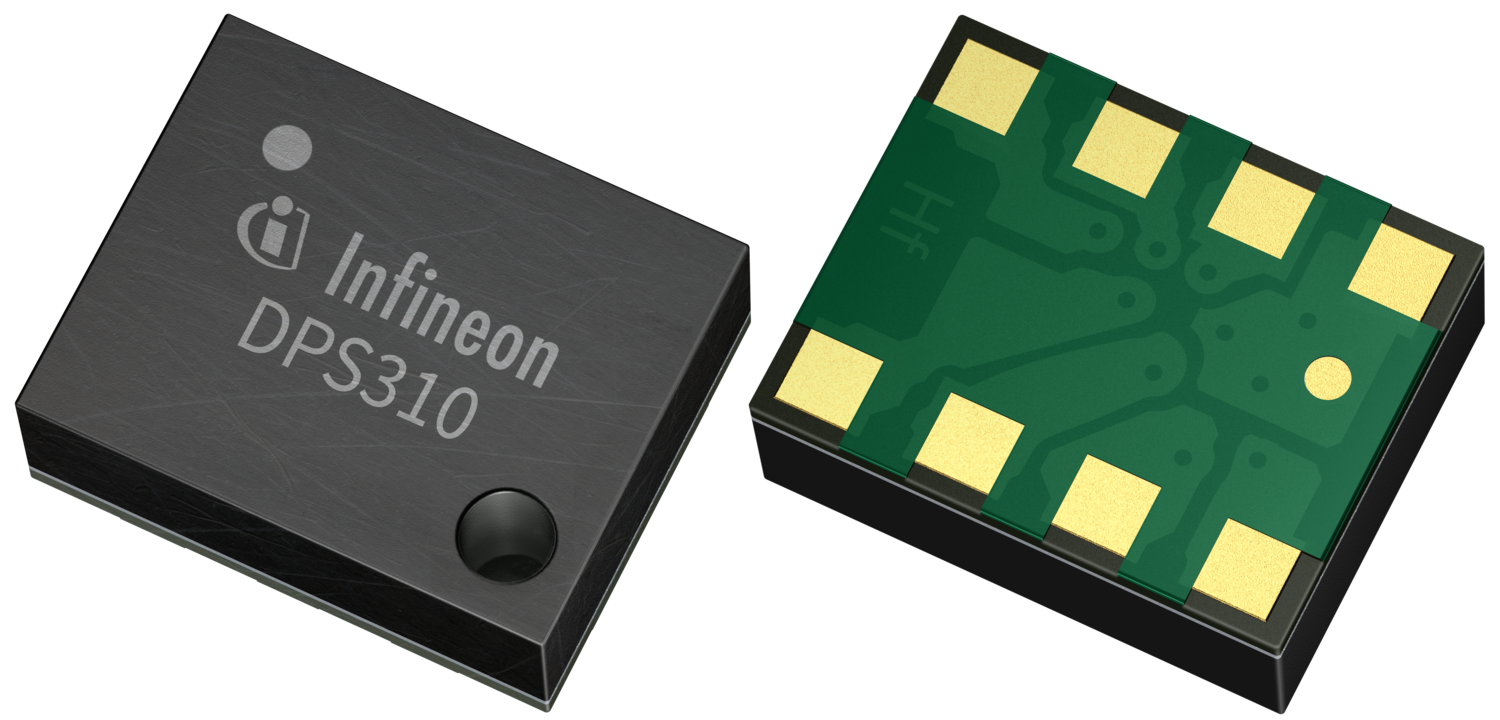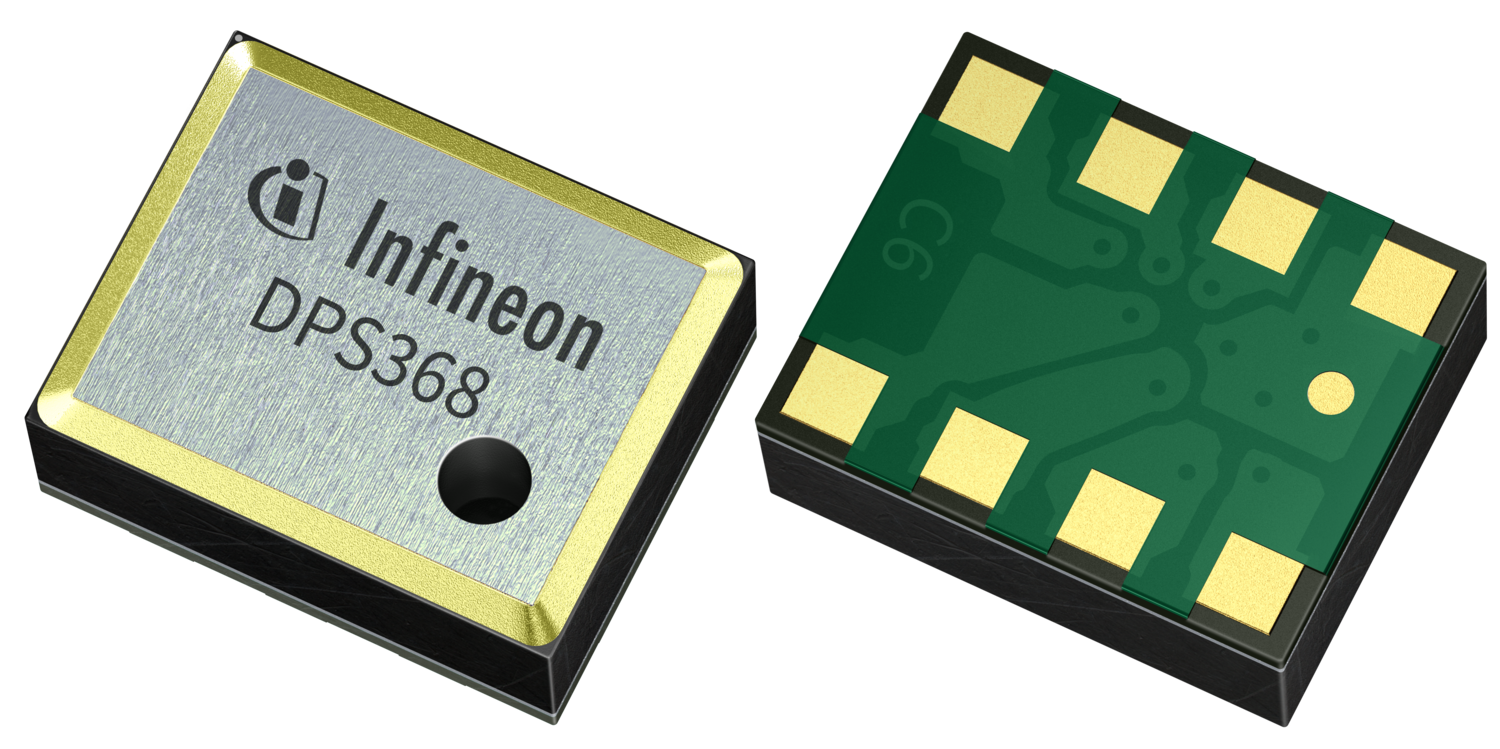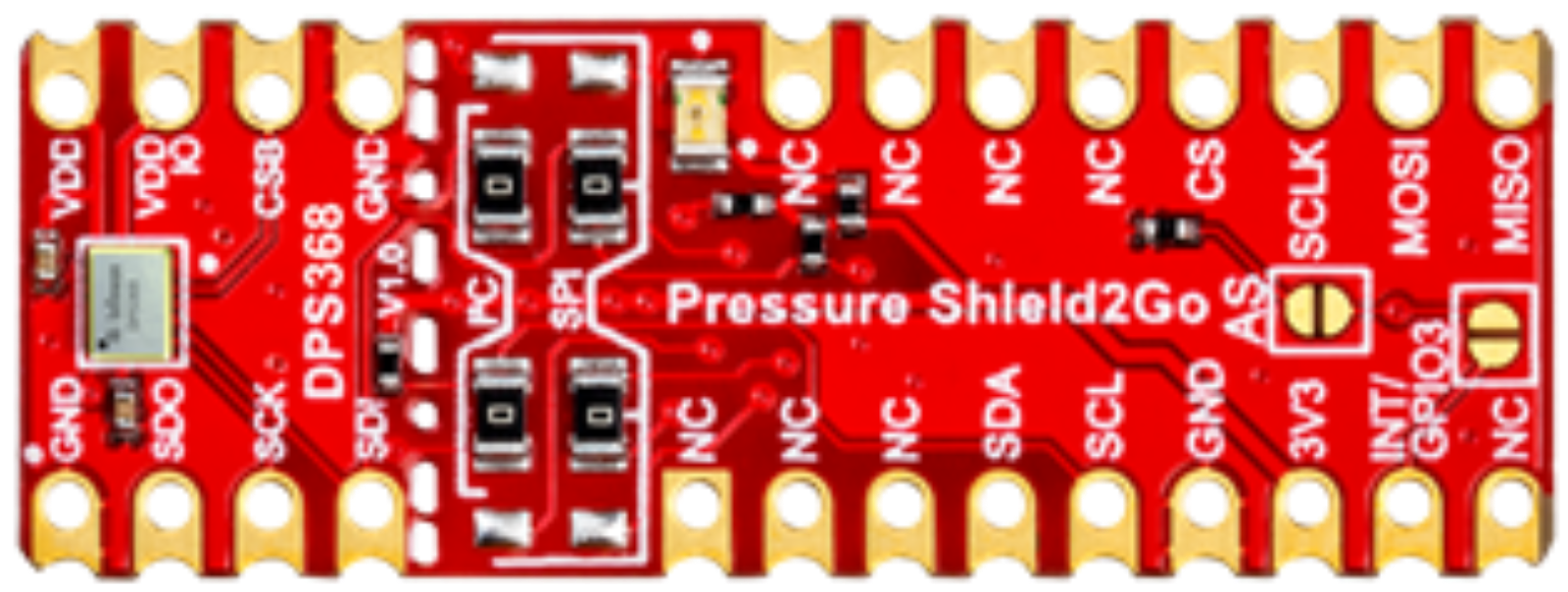Home
Arduino Library DPS310 and DPS368 Shield2Go and Kit 2Go.
 |
 |
The XENSIV™ DPS3xx series are miniaturized digital barometric air pressure sensors with a high accuracy and a low current consumption, capable of measuring both pressure and temperature. The pressure sensor element is based on a capacitive sensing principle which guarantees high precision over temperature changes. The small package makes the DPS3xx series ideal for mobile applications and wearable devices.
The internal signal processor converts the output from the pressure and temperature sensor elements to 24 bit values. Each unit is individually calibrated. The calibration coefficients calculated during this process are stored in the calibration registers. The coefficients are used in the application to convert the measurement results to high accuracy pressure and temperature values.
The result FIFO can store up to 32 measurement results, allowing a reduced host processor polling rate. Sensor measurements and calibration coefficients are available through the serial I²C or SPI interface. The measurement status is indicated by status bits or interrupts on the SDO pin.
| DPS310 | DPS368 | |
| Resolution | ±0.005 hPa (equating to ±5 cm) | ±0.002 hPa (equating to ±2 cm) |
| Fifo | up to 32 pressure/temperature measurements | up to 32 pressure/temperature measurements |
| Relative accuracy | ±0.06 hPa (or ±0.5 m) | ±0.06 hPa (or ±0.5 m) |
| Pressure operation range | 300 – 1200 hPa | 300 – 1200 hPa |
| Temperature accuracy | ±0.5°C | ±0.5°C |
| Avg. current consumption | 3.0 µA | 1.7 µA |
| Min. current consumption | 0,5 µA @1Hz sampling rate | |
| Interface | I2C (default) and SPI | I2C (default) and SPI |
| Additional | Water resistant down to 50m for 1min |
Both, the DPS310 and the DPS368 are available as Shield2Go breakout board or as Kit 2Go including a XMC1100 microcontroller.
| Shield2Go |  |
 |
| XENSIV™ DPS310 Shield2Go | XENSIV™ DPS368 Shield2Go | |
| Kit 2Go |  |
 |
| XENSIV™ DPS310 Kit 2Go | XENSIV™ DPS368 Kit 2Go |
All boards are by default using the I2C interface. To change to the SPI interface you have to resolder the 0 Ohm bridges to the SPI configuration (see respective pinout diagram).
The I2C address can be changed from 0x77 to 0x76 by closing the J1 bridge. This is required to use two sensors on one I2C bus.
ℹ️ Important: In order to use the interrupt functionality on the Kit 2Go the solder bridge J2 needs to be closed first.



The Shield2Go form factor of the Shield2Go evaluation board is directly compatible with the XMC2Go board
- Stack the DPS3xx Pressure Shield2Go board on top of the XMC2Go as shown in the picture
- The additional pin on the left-top side (designated with NC) is left floating
- Using the XMC-for-Arduino Arduino integration, the Arduino library for the DPS3xx can be directly used

For the Kit 2Go version of the DPS3xx no further hardware is needed, just connect them via USB to your computer and install the XMC-for-Arduino Arduino integration. From there choose the Infineon XMC1100 XMC2Go as board.
After installing the library in your Arduino IDE open one of the examples for the DPS3xx from File –> Examples. Connect your microcontroller to the computer and upload the example. Select the related COM port from Tools –> Port and open the serial monitor with the set baud rate (see sketch/code with Serial.begin(<BAUDRATE>);)
The DPS3xx has a maximum rating of 4 V. Third party boards with 5 V logic, e.g. the Arduino Uno, cannot be connected to the DPS3xx Pressure Shield2Go board directly.
Please use appropriate level shifting for these boards - for example using the Infineon My IoT Adapter.
